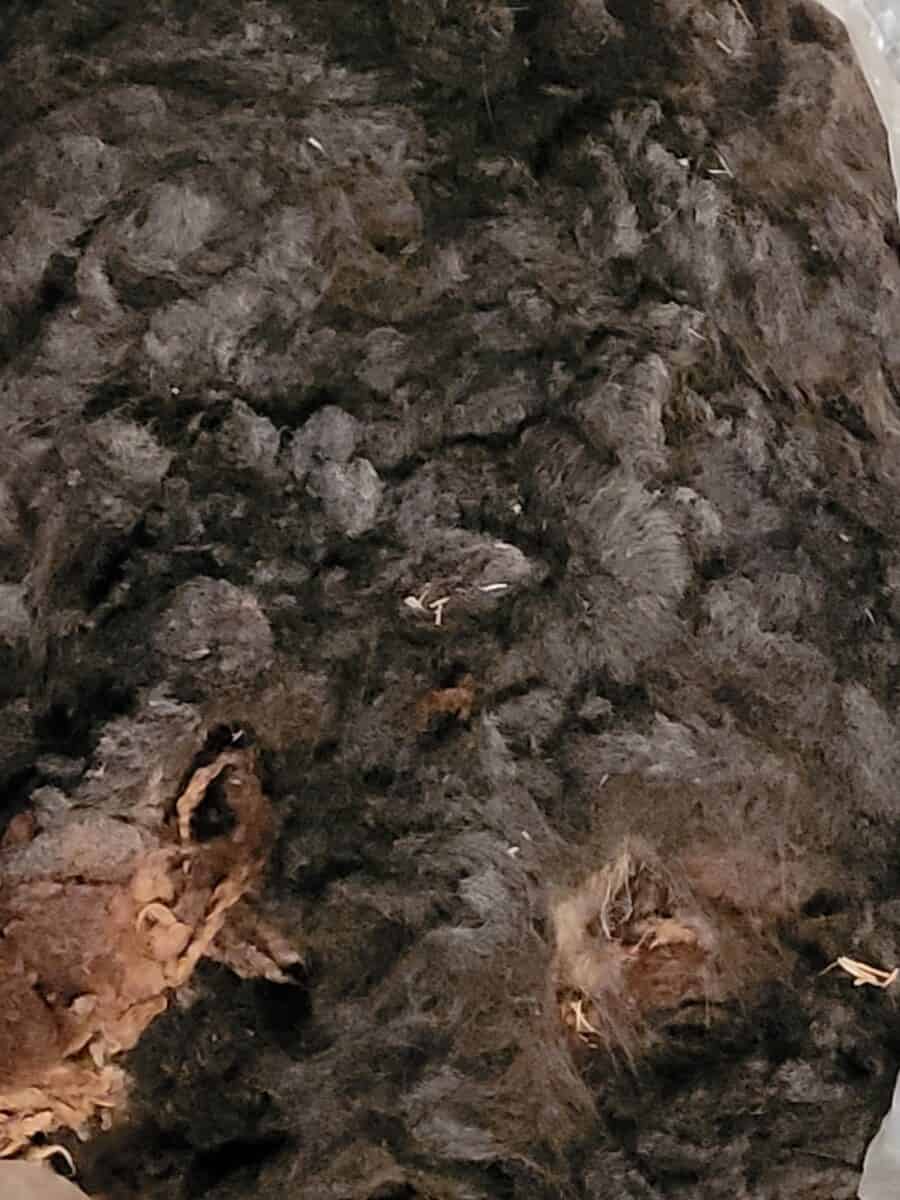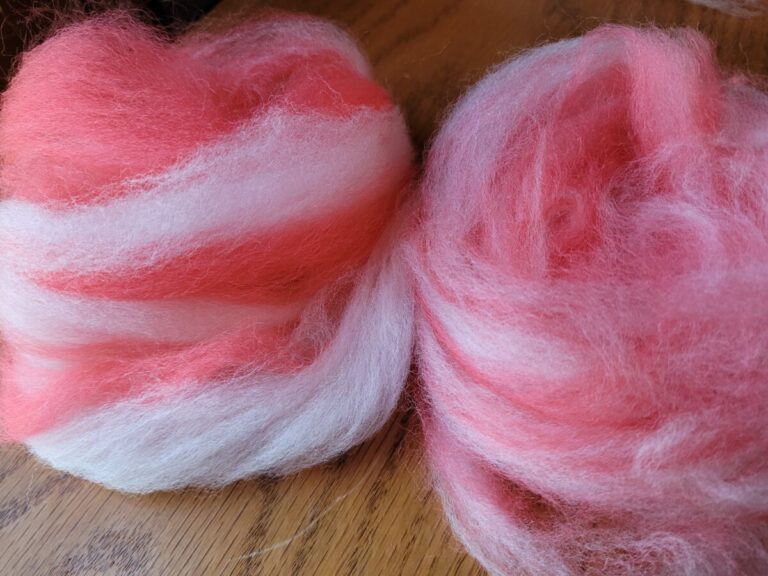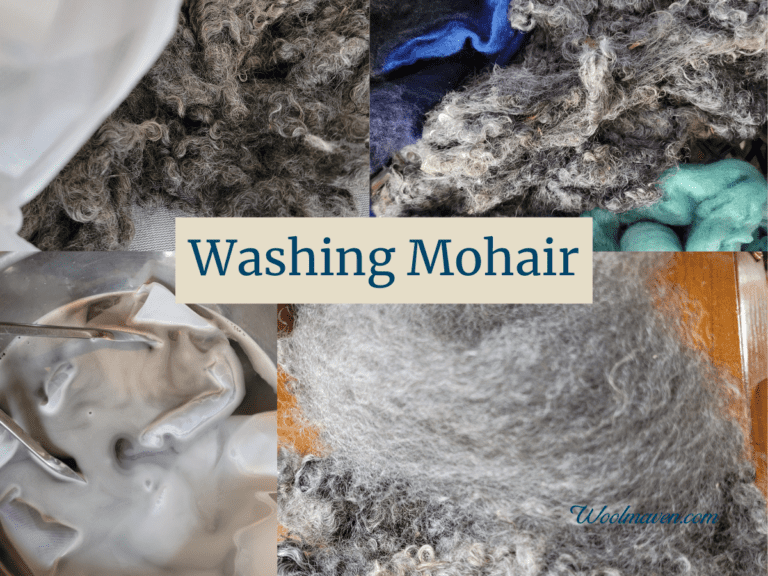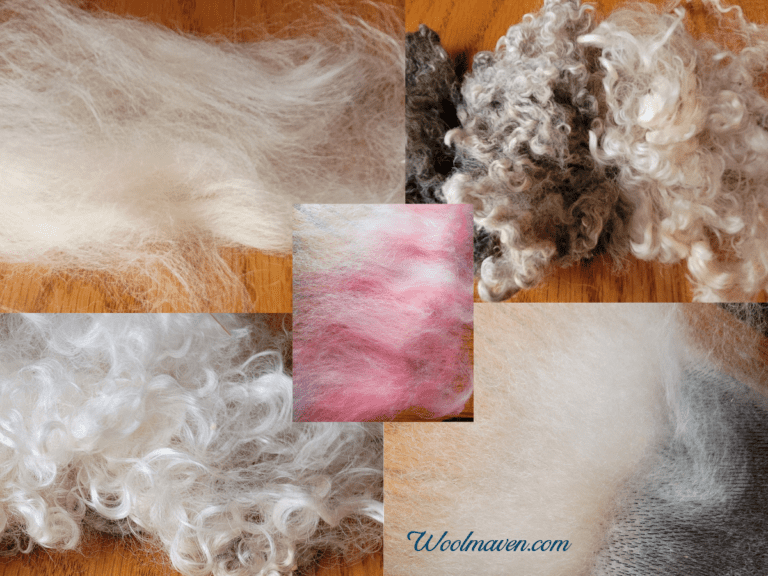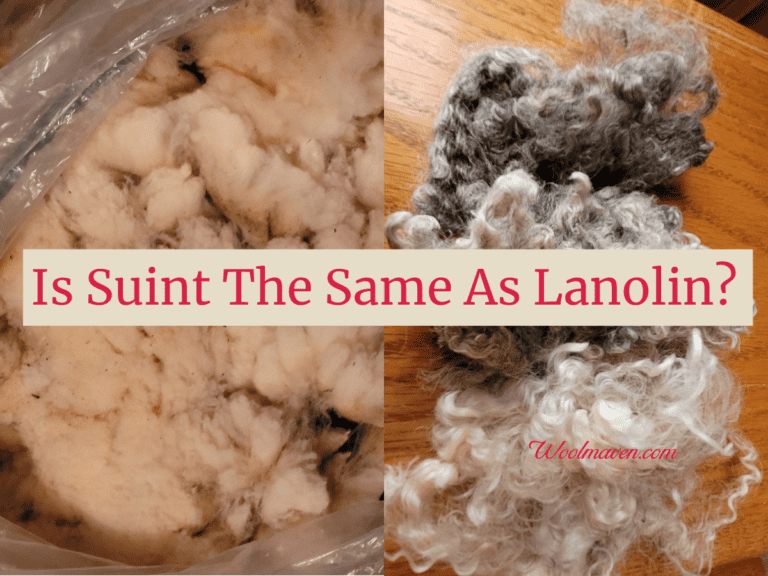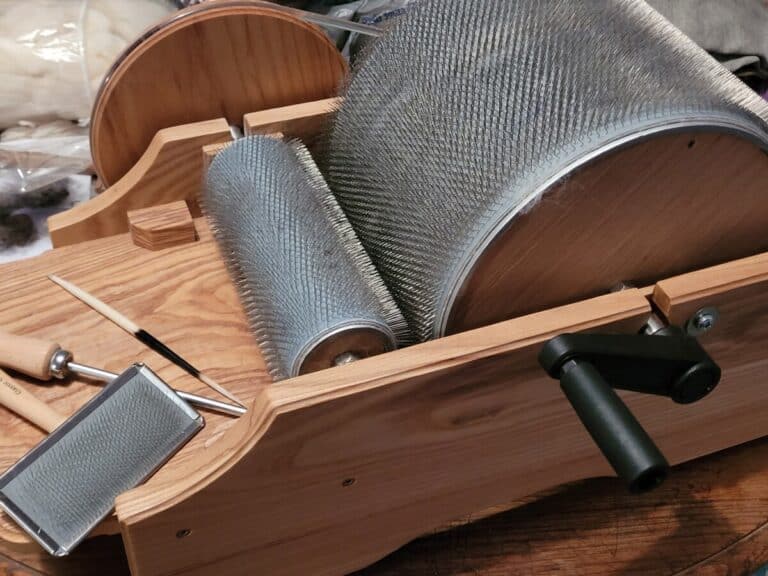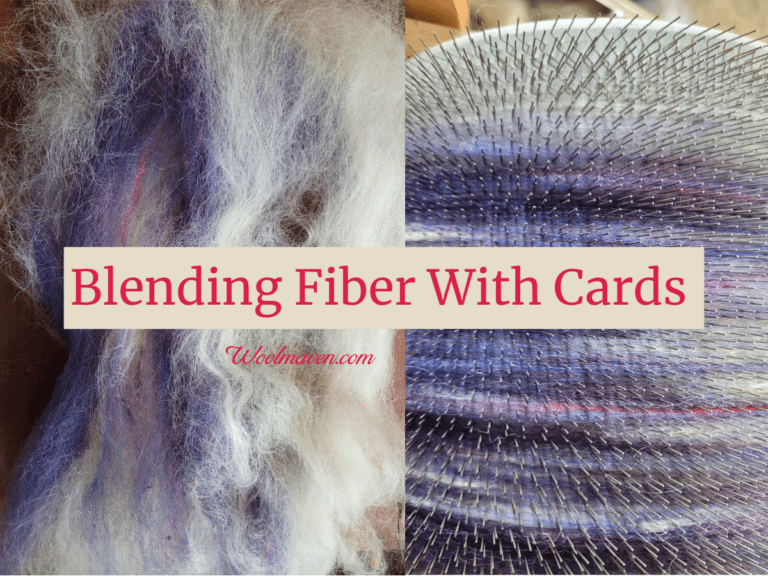Do You Need To Wash Wool Before Carding It?
You decided to purchase some unwashed, straight from the sheep wool for your handspinning!
To get that wool ready for spinning, you plan to card it, but, the real question is: do you have to wash the wool before carding it?
Wool does not have to be washed before carding, if you are willing to get lanolin on your cards and enjoy spinning raw wool. If you do not like spinning raw wool or need some of the lanolin removed to easily work with the wool, it will need to be washed before carding.
Who doesn’t love a new fleece? It’s exciting to see what a new to you wool will do and how spinnable it will be, but before we get too carried away, does that wool need carded first?
Should You Buy A Raw Wool Fleece? gives you the pros and cons of working with an entire raw fleece.
You do not need to wash wool before carding it
You do not need to wash wool before carding it.
Raw or grease wool can be carded, as is, but, of course, that means you will be working with the greasier wool for both fiber preparation and spinning.
If you purchased washed wool, for example, if you purchased an entire washed fleece, you do not need to rewash it before carding.
You would only need to wash raw wool, and then, only if you feel you need to.
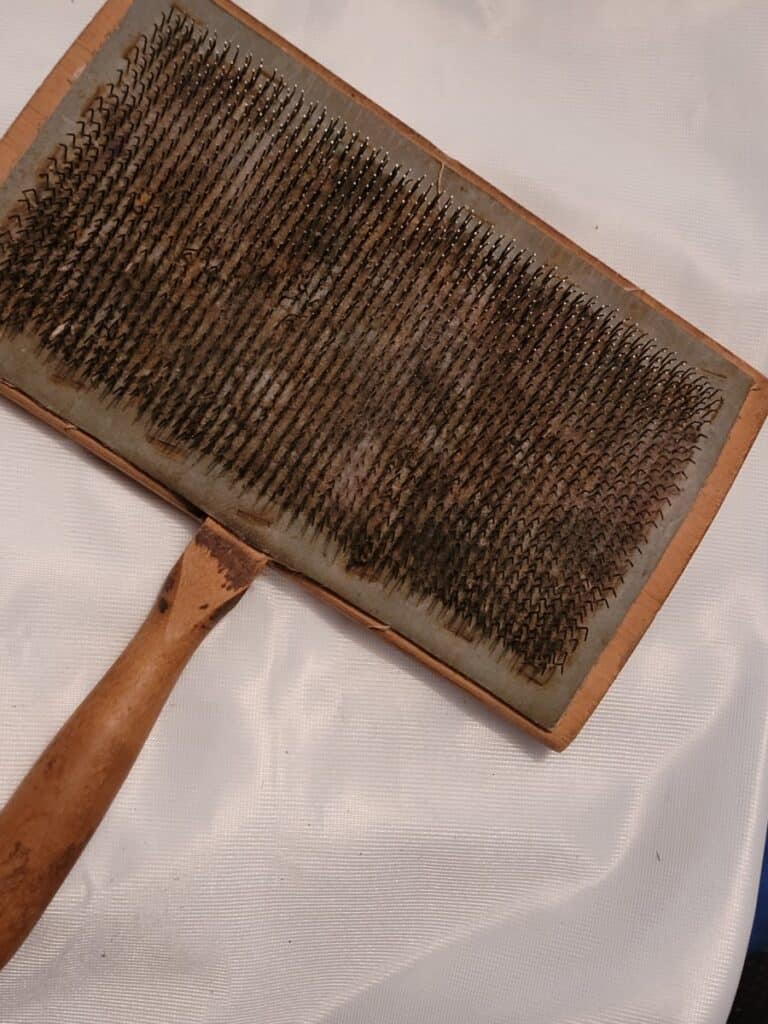
Carding unwashed wool makes your equipment greasy
If you decide to card your unwashed wool, you will be making your cards greasy.
Grease on the cards not a problem if you always work with raw wool, so you are not getting washed wool dirty when carding, and don’t mind the lanolin on the cards, they are your cards, after all.
If you want to keep washed wool clean and yet still card raw wool, consider getting a second set of cards to use for raw wool only. This way your first set stays clean.
I have to admit, I only have one set of handcards and I use them for both washed and unwashed wool, so I am accepting the idea that I will occasionally be getting a bit of grease on clean wool.
Tips To Get A Great Fleece gives you some pointers on how to pick out a fleece that will work for you and your spinning.
Consider working with the wool before carding
Some wool is very non greasy and pretty easy to work with straight off the fleece.
Whenever I get this type of wool to spin, I try to spin it raw, first. If seems to work well for me unwashed, I keep spinning.
This means that I am taking a small section of the wool, teasing apart the ends with my fingers and spinning it, as is, without carding.
Sometimes this works, other times it doesn’t.
I’m not opposed to carding, at all, but if I can spin the wool well, uncarded, I’ll just do that rather than carding it all first.
If the wool is not working well for me unwashed, I’ll then move to a suint soak, and then actual washing to remove the lanolin if I feel washing the wool is needed to make it spinnable.
Why you would wash wool before carding
You may want to wash wool before carding it to make it easier to work with for you.
If you do not like working with a raw wool or the wool just has too much grease for you then give it a wash and see if that will make the wool more spinnable for you.
The wools that I have washed before carding have been fleeces that have matted up ends, are really dirty or have quite a bit of grease, all things that will interfere with carding.
Please notice that I keep writing “for you”, that is because some handspinners love to work with raw or grease wool, like me, but others hate it.
Handspinning should be an enjoyable hobby, if you need to wash the wool to enjoy spinning it, wash it!
If you don’t mind the idea of spinning “in the grease”, give it a shot and see how it goes for you.
How to tell if you can use this wool unwashed
You can use wool unwashed, if you are happy with how the wool seems to be separating out when you grab a lock or two and see if you can separate out the fibers by hand.
This is my preferred method of spinning, I like to work with raw wool, straight from the fleece.
If the locks are easy to manipulate, have a decent staple length and are not too dirty, I’ll see if I can spin unwashed.
If the wool works well for me unwashed, super! If not then I move to a suint soak.
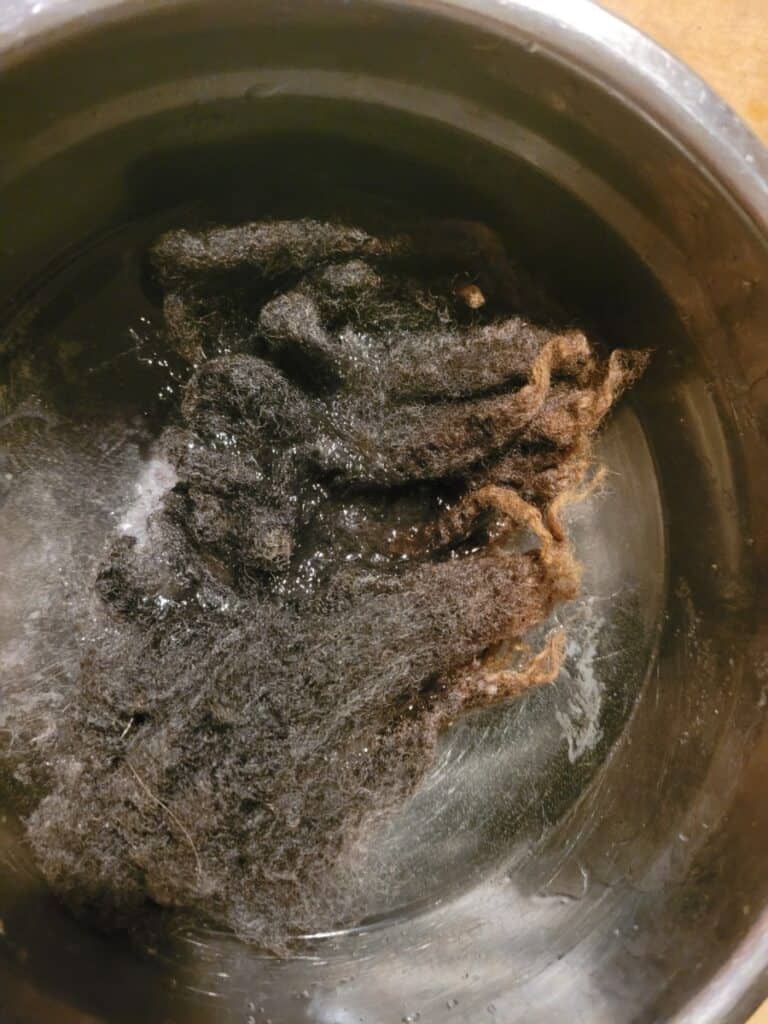
Suint soaking wool instead of washing it
If I feel that the wool needs some work to make it easier to spin, I’ll try a suint soak first.
Suint is the stuff in the wool that is not grease, it’s more like sweat from the sheep.
Since suint is water soluble, an overnight soak in tepid water will remove the suint and make your wool more spinnable.
A suint soak is easy, just put tepid water in a container big enough to easily hold the wool. Put the wool in a mesh laundry bag and set it in the water.
Do not pour the water on to the wool, if you need to add more water, push the wool aside first.
Let the wool sink on it’s own and leave it overnight.
The water will be tea colored in the morning. Gently take the wool out, drain it and and let it dry. Now it’s ready to be spun and still has the lanolin intact.
How to tell if you need to wash wool before carding
You may need to wash your wool before you card it.
If you have tried the suint soak and the wool is still not as workable as you need it to be, the next step is to actually wash it, which will remove the grease.
Consider washing wool before carding it if:
- the wool is dirty
- the wool has contaminants
- the wool is sticky
- the wool is old
- the wool fibers are not easy to separate out by hand
Washing wool before carding it will make the wool more workable and remove the grease (lanolin) that could be the main source of your frustration, especially if the wool is older. Lanolin hardens with age.
The other thing to watch out for is if you don’t like the feel of the raw wool. Once again, handspinning is a fun hobby, if you prefer using washed wool, wash it.
Classic Carder has a nice short article on Preparing Fleece, where she goes over suint soaking and a simple wash routine.

